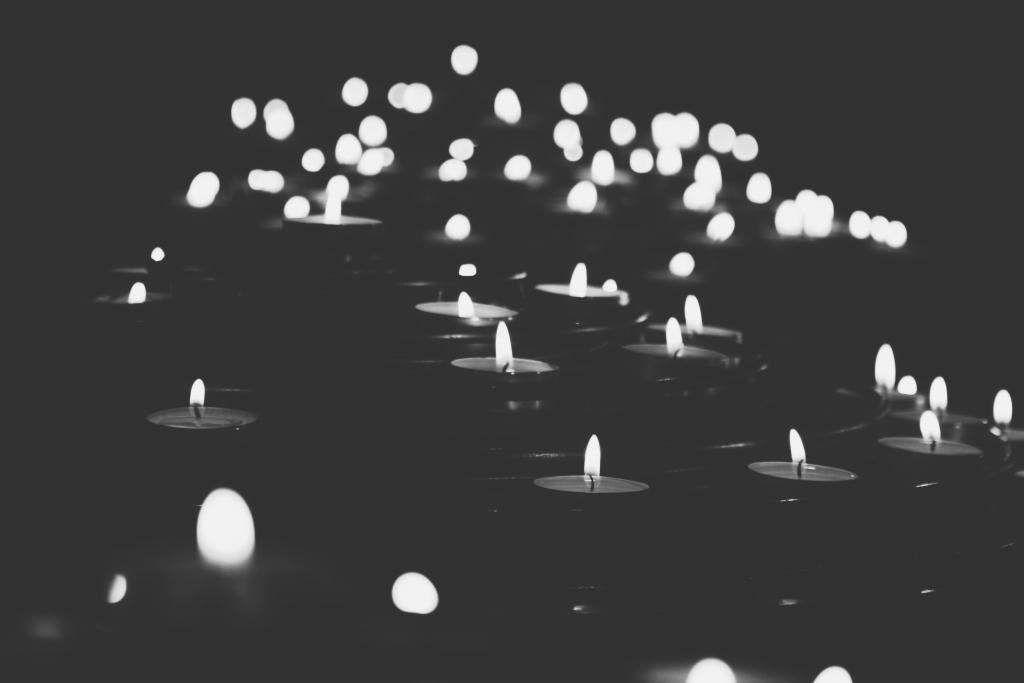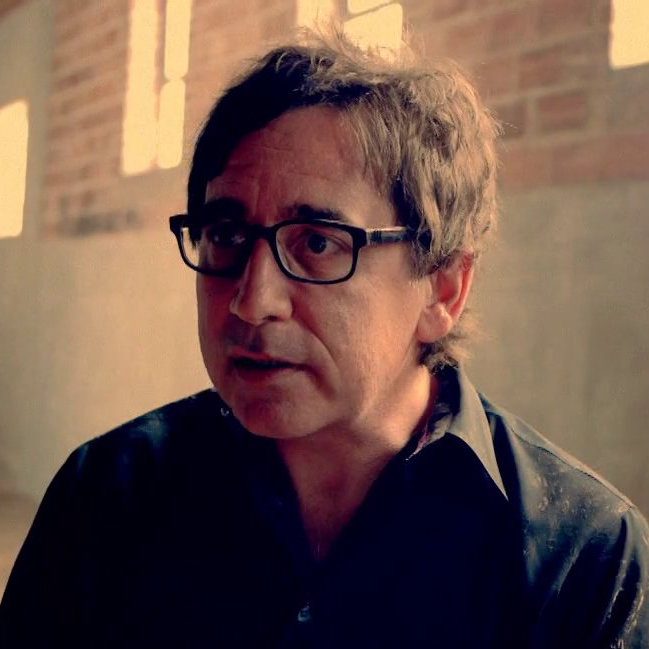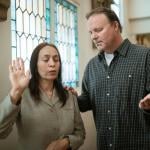I’m standing in a dimly candle-lit room full of strangers, staring at the faces of long dead-saints, and hearing the chants of a priest I can barely understand. No, this isn’t some nightmare of mine, this is my first Vespers service at an Orthodox church.

A Vespers service is quite the beautiful affair. With the songlike chanting and the many candles and intimate feel, it evokes a sense of magic, I think. The history of the liturgy practically smells of aged wine, and to participate in such a service is to drink deeply from the worshipful practices of the ancients.
But I am out of place. I marvel at the Icons but I do not know their names. I close my eyes and listen to the chants, but I am unsure of their true meaning. Having only ever been to one other Orthodox service, I feel like I have opened these big wooden doors and stepped into a foreign world.
My social anxiety kicks in and while the other worshippers are repeating various prayers my mind repeats the only prayer I can think of at this moment: “Just don’t be awkward.”
But as the Priest walks around the room to approach the various Icons with the bells and incense, the other worshippers anticipate his path. They shift to the right, facing the left wall of the church.
I however, do not anticipate the priest and when I look up, I see the eyes of everyone in the room staring right back at me. No doubt they can see the sheepish look on my face. What they cannot see is the bright shade of red that lights up my cheeks as I feel hot blood rushing to my ears.
Awkward and embarrassed, I shift and face the same way with them. A few moments later I hear the bells behind me, and footsteps. I finally turn around to see that everyone else has already turned and I, ever the stalwart idiot, have my back to all of them. Again I adjust as the priest finally makes his way back to the front altar and firmly into my view where I shan’t be caught off guard again.
It’s at this point I notice my position in the room. I had started the service in the very back. But with each awkward shift, I had moved closer into the core of the group. My stumbling actually made it necessary that I move inward toward the people so I could quickly turn and move with them instead of lagging around in isolation. They had tricked me, these sneaky Orthodox, into coming closer to them.
But it didn’t feel like a forced or rigid uniformity, it felt like community.
Standing in the back of the room I could barely see what was happening at the altar, but as the priest moved around it had the effect of gathering me in. Now, standing in the middle of the group I was in full view of the front and the icon of Jesus was staring right at me.
I am finding that everything in Orthodox theology and worship is meant to have this effect. It draws the worshipper out of isolation and into community, then pulls the collective toward the face of Jesus. It feels so unlike much of my Protestant upbringing, where Jesus was my “personal Lord and savior,” and the ideal prayer life was spent alone in a closet yelling at a silent God.
For a liturgical tradition like the Orthodox, prayer is taught in community. Theology is done in community. Worship is practiced by community. This way of life creates an interesting shift in how God is viewed, no longer the champion of an individualistic faith, but a savior of a whole community.
When I asked the priest for books to help me learn to pray, he said “Prayer is best taught in the life of the church.”
When I asked him for books to help me understand Orthodox theology, he responded “Theology is best taught in liturgy and worship.”
It defies my bookish nature. Although I could open up Lossky’s tome tomorrow (and perhaps I will) without the context of a living community, will I really understand any of it? If I learned the various chants and prayers but never experienced praying them with the people of God, would they really be meaningful? Hopeful prayers can be uttered in isolation, but only in hope-connected prayers said with the saints can my hope be made whole as it is joined with those around me.
And so I am floating around this beautiful little community, intruding into their sacred space to catch a glimpse of the mystery they hold within. They have much to teach me, the Orthodox, about prayer and mysticism and trust in Jesus, and I know it. So I linger by their candles, being pulled further inward by the people toward whatever they see and grasp in Jesus.
At the Vespers service, I couldn’t help but chuckle at just how out of place I was, and at the same time how at peace I felt. The Orthodox faith is ancient, spanning the annals of time. Certainly they of all people have patience for a stumbler like me.
 Nathan Smith is a writer and thinker from Texas. Follow him on Twitter.
Nathan Smith is a writer and thinker from Texas. Follow him on Twitter.











